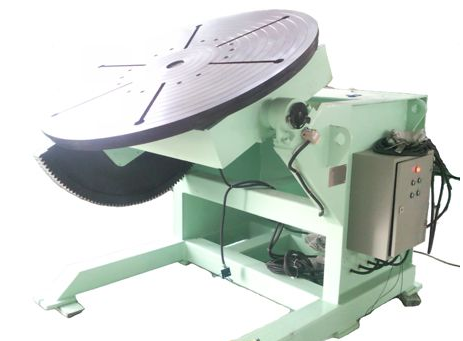Welding positioners are invaluable tools in the world of metal fabrication and welding. These devices enable welders to manipulate the position of the workpiece, ensuring precise and efficient welding. Whether you are a seasoned welder or new to the field, understanding the fundamentals of welding positioners can greatly enhance the quality and productivity of your welding projects. Here's what you need to know:
1. What Are Welding Positioners?
Welding positioners are mechanical devices used to hold and rotate workpieces during welding. They come in various sizes and configurations, but their primary function is to position the workpiece at the optimal angle and orientation for welding. This allows welders to access all sides of the workpiece without the need for manual repositioning, resulting in more consistent and high-quality welds.
2. Types of Welding Positioners
There are several types of welding positioners available, each designed for specific applications:
Turntable Positioners: These positioners consist of a turntable that rotates the workpiece horizontally. They are ideal for welding cylindrical or round objects like pipes and tanks.
Headstock and Tailstock Positioners: These positioners have a headstock and a tailstock that can be adjusted to support and tilt the workpiece. They are versatile and suitable for various workpiece shapes.
Automatic Positioners: Automatic positioners are programmable and offer precise control over rotation speed and angle. They are commonly used in automated welding systems.
Specialized Positioners: Some positioners are designed for specific tasks, such as vertical welding or cladding. These specialized positioners cater to unique welding requirements.

Welding Positioner
3. Benefits of Using Welding Positioners
Welding positioners offer several advantages, including:
Improved Weld Quality: Positioners ensure consistent and high-quality welds by maintaining the ideal angle and orientation throughout the welding process.
Increased Productivity: Welders can work more efficiently as they do not need to manually reposition the workpiece, reducing downtime.
Enhanced Safety: Positioners reduce the need for welders to work in awkward or uncomfortable positions, decreasing the risk of fatigue and injury.
Versatility: Different types of positioners can accommodate a wide range of workpiece sizes and shapes.
Consistent Welding Parameters: Automatic positioners allow precise control over welding parameters, resulting in consistent weld bead size and penetration.
4. Considerations When Choosing a Welding Positioner
When selecting a welding positioner, keep the following factors in mind:
Workpiece Size and Weight: Ensure the positioner can support the size and weight of your workpiece.
Rotation Speed and Angle: Consider the required rotation speed and angle for your welding application.
Control Options: Determine whether you need manual, semi-automatic, or fully automatic control.
Budget: Balance your requirements with your budget to find the most suitable positioner.
5. Maintenance and Safety
Regular maintenance of welding positioners is essential to ensure their safe and reliable operation. Inspect components, lubricate moving parts, and address any issues promptly. Additionally, follow safety guidelines and precautions when using positioners to prevent accidents and injuries.
Welding positioners are versatile tools that can significantly enhance welding efficiency and quality. By understanding their types, benefits, and selection criteria, you can make informed choices and achieve better results in your welding projects.






